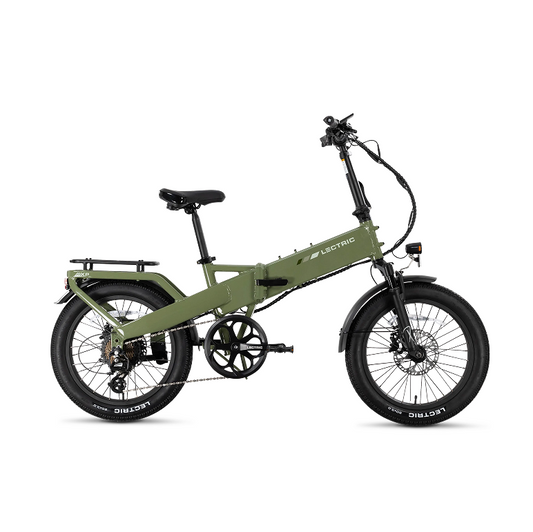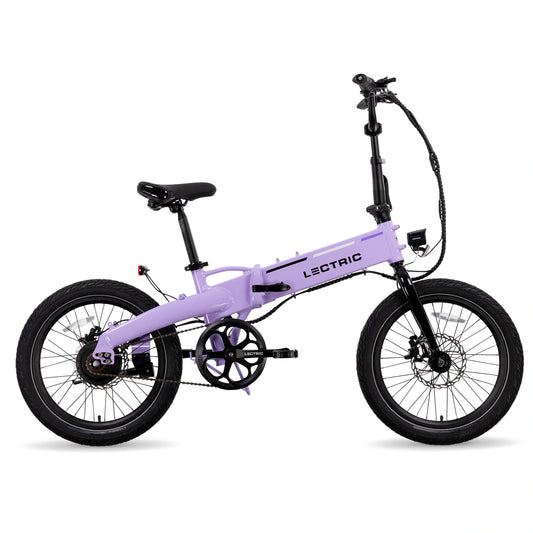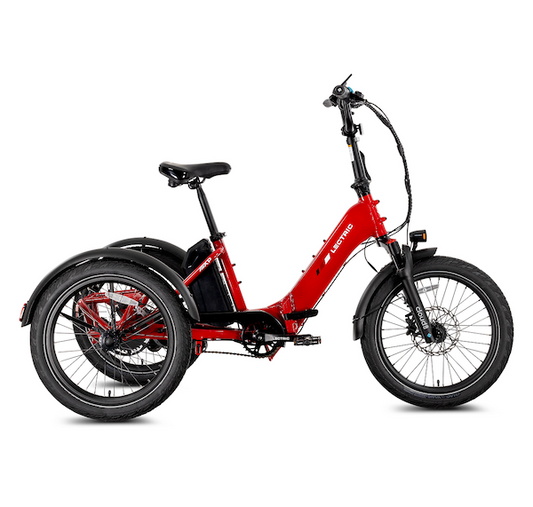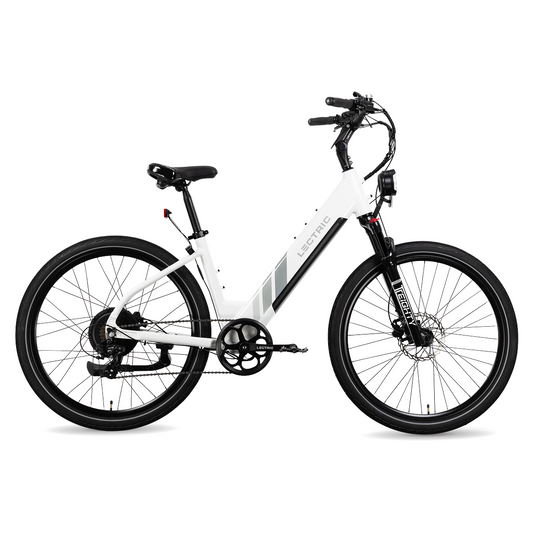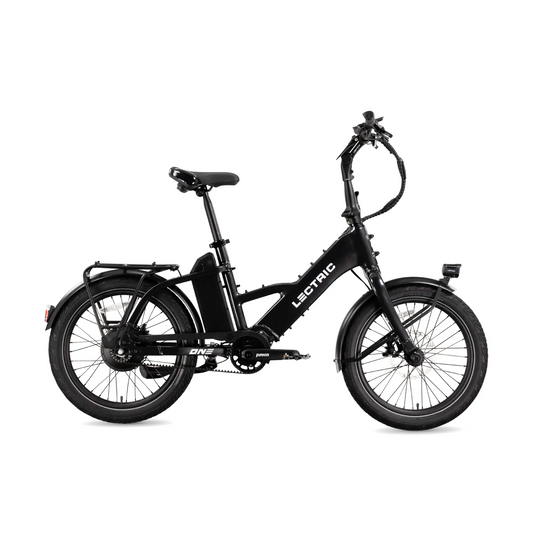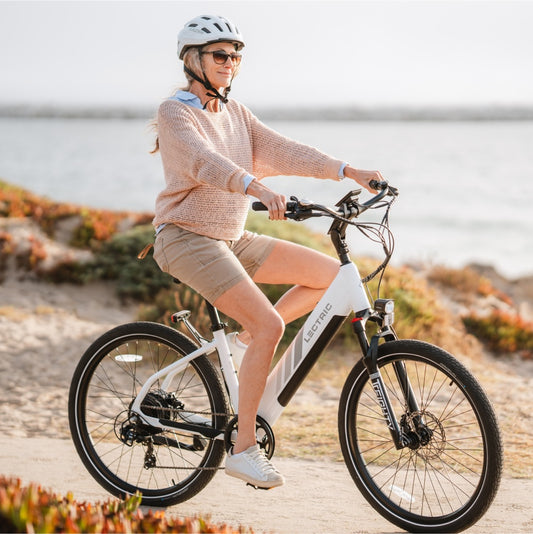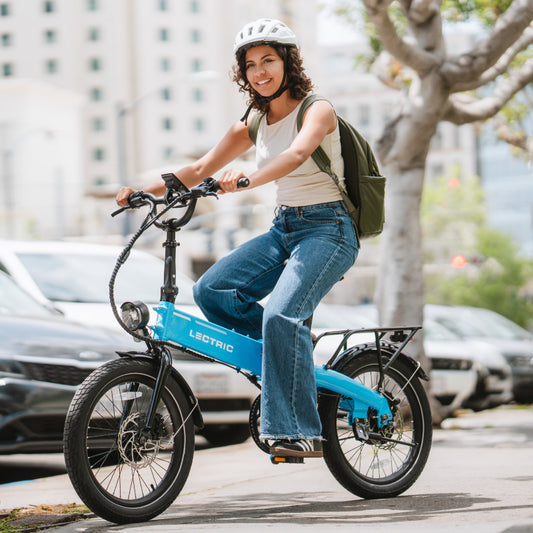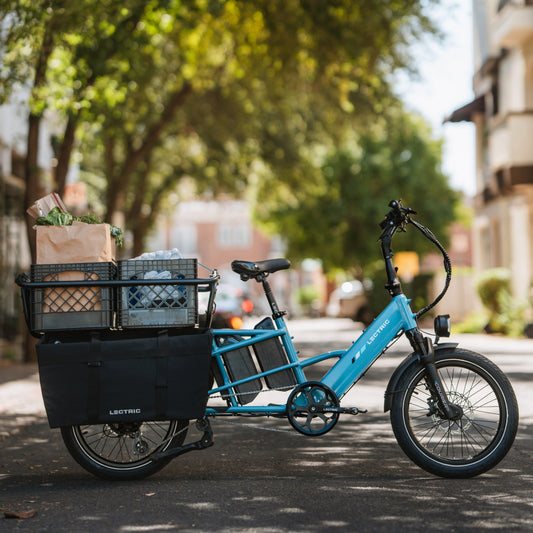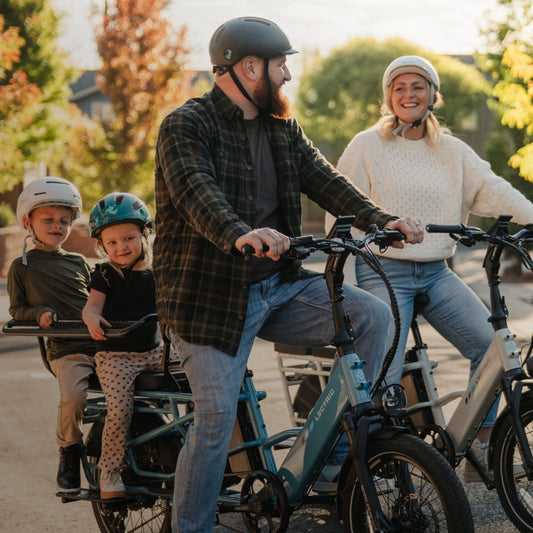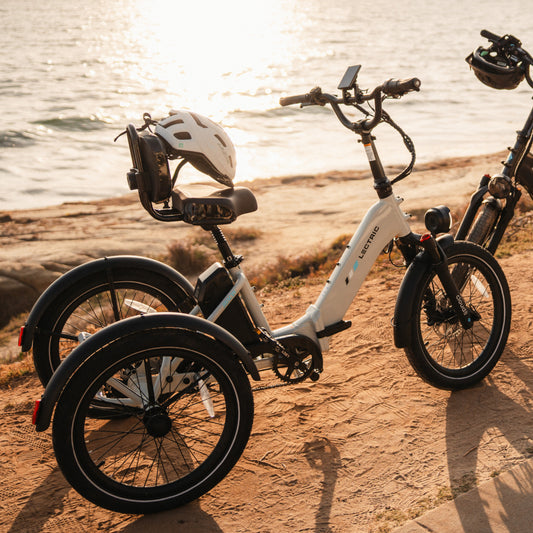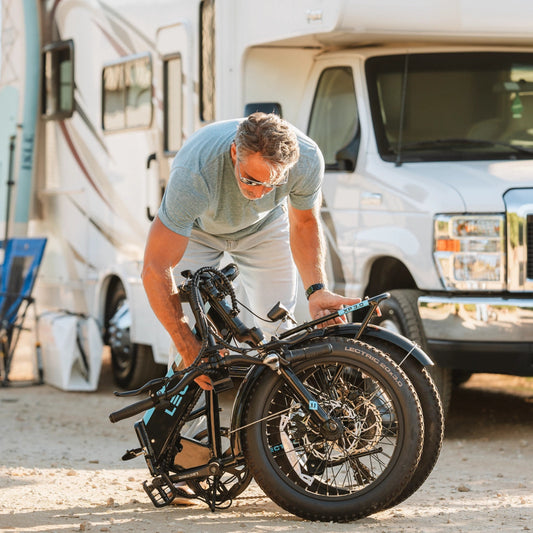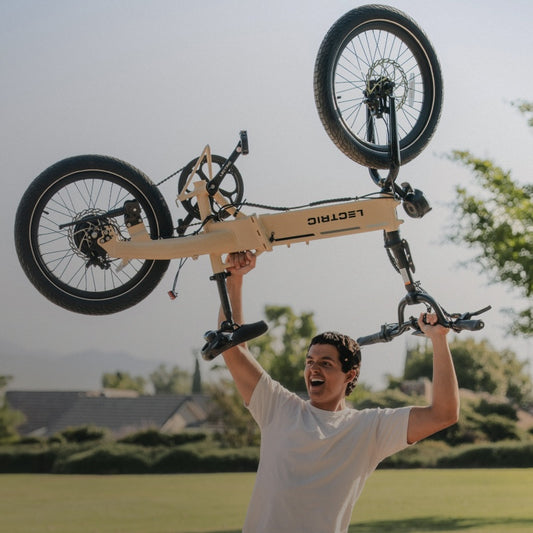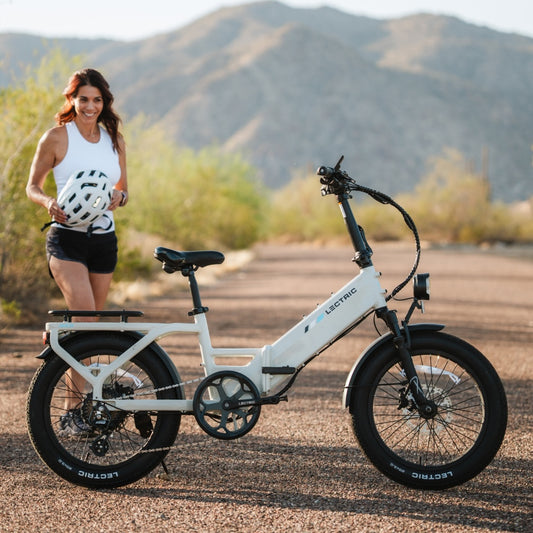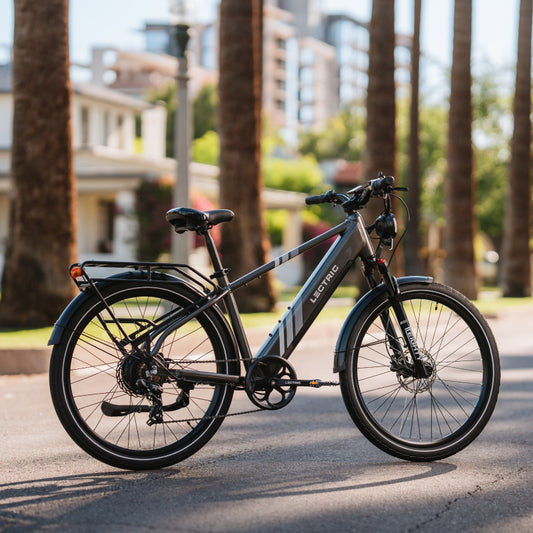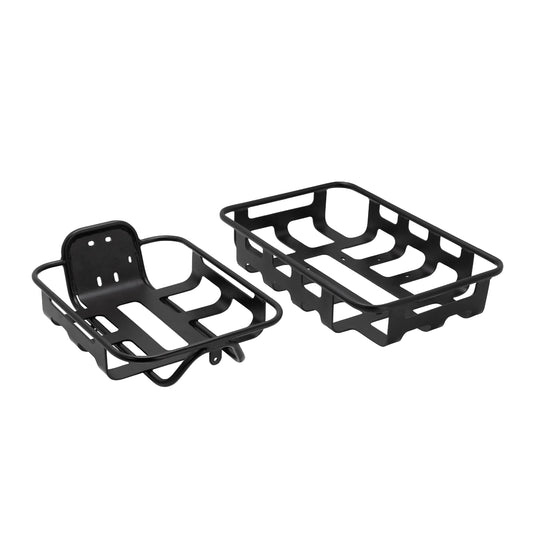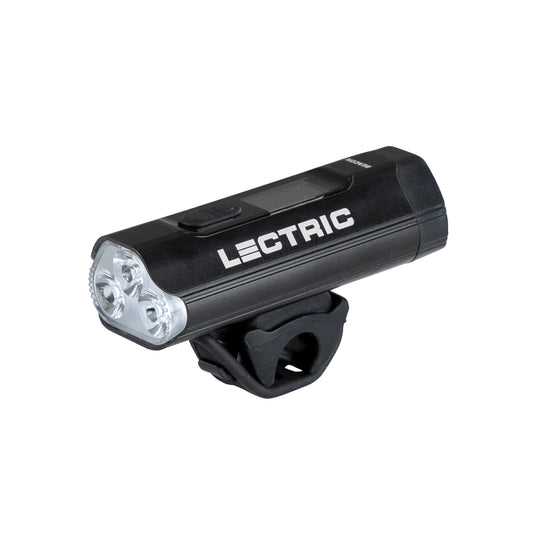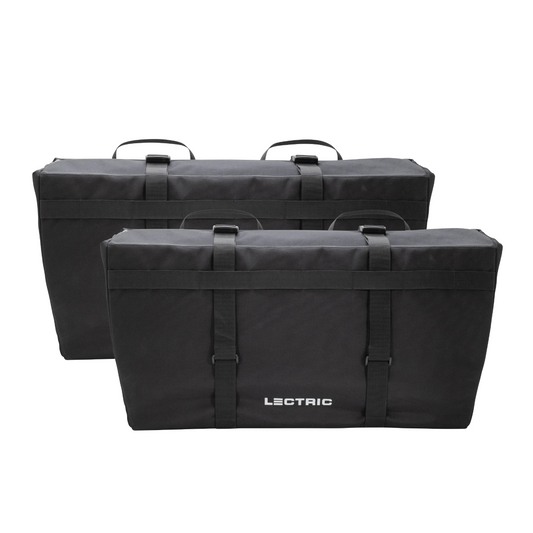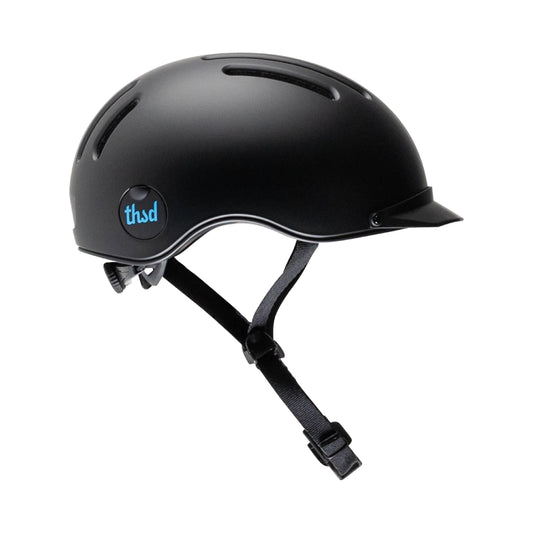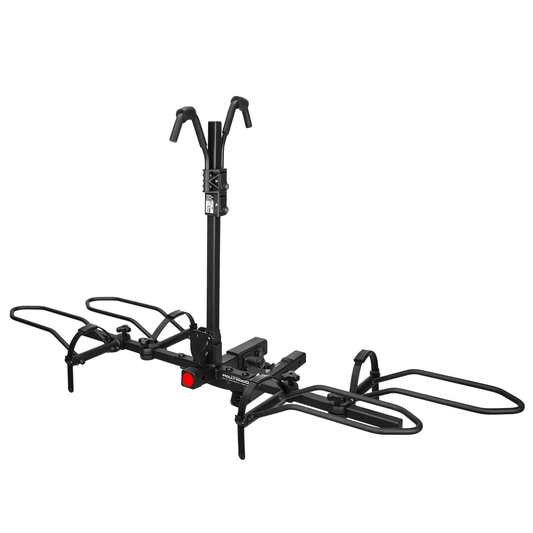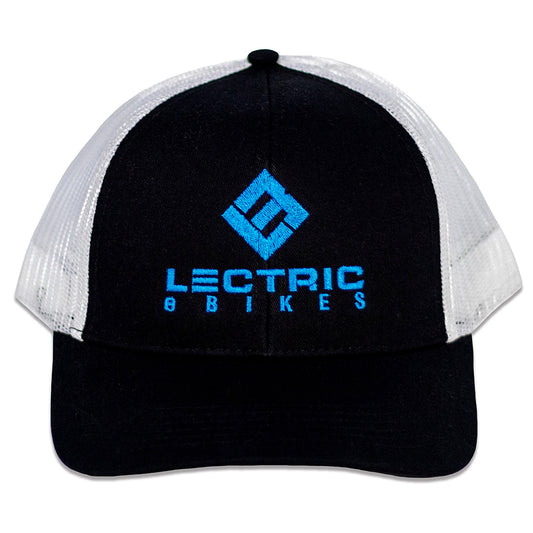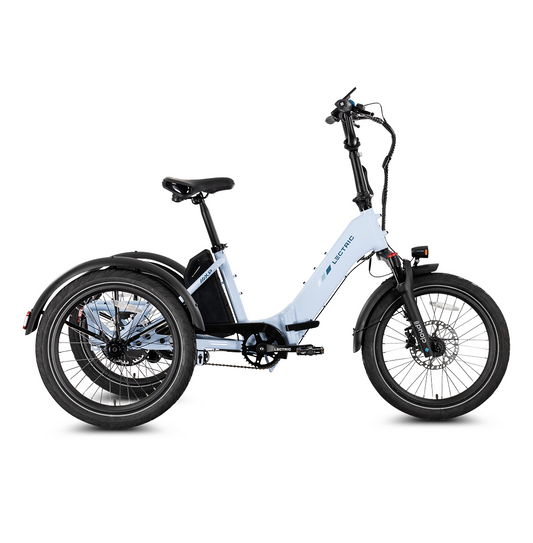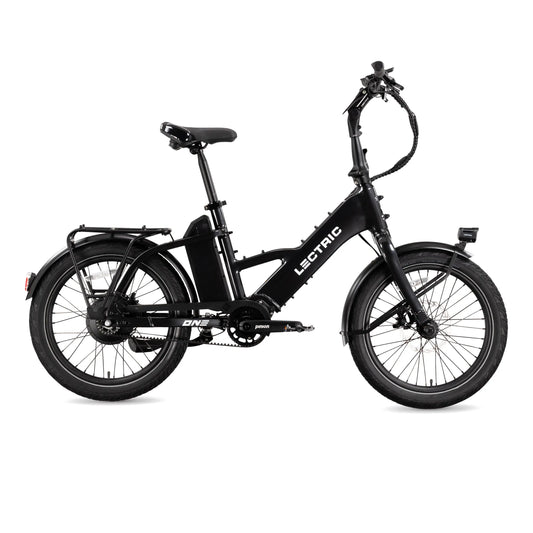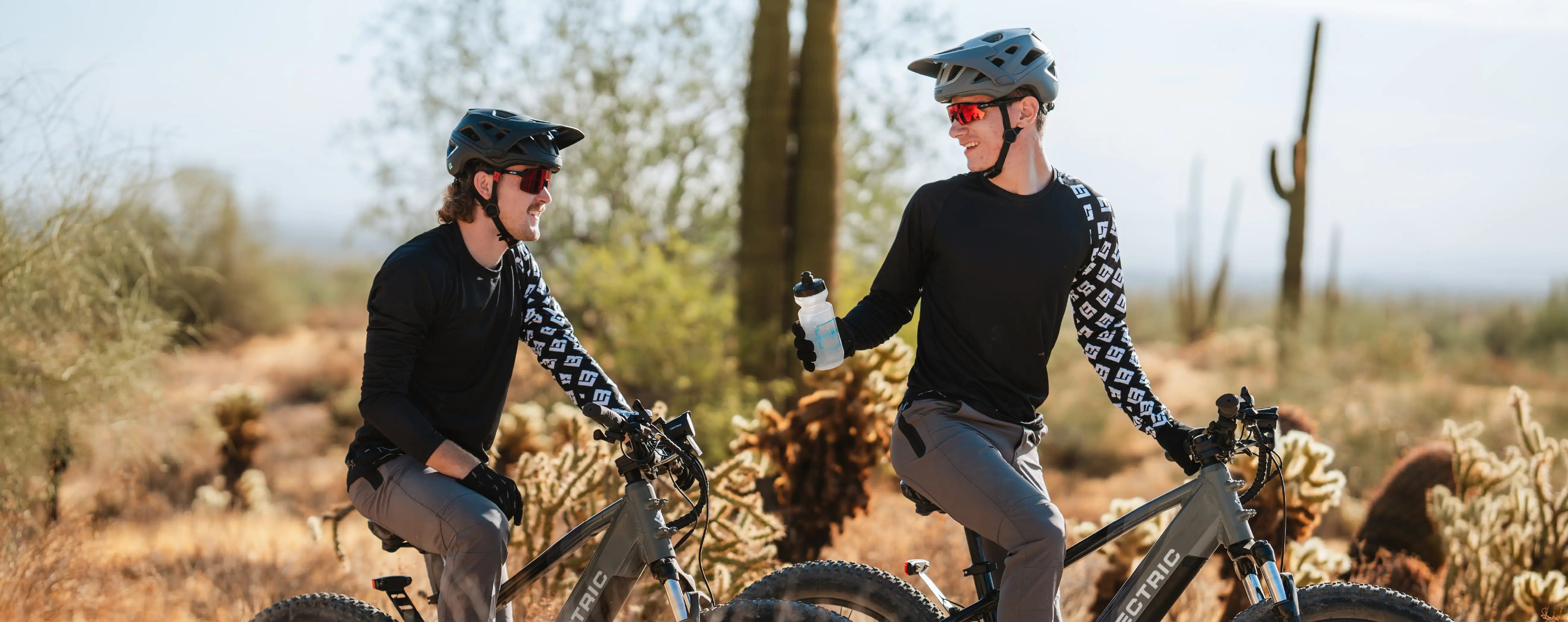
FAQ
Find out more about Lectric eBikes!
Collapsible content
What exactly is an eBike?
An ebike, short for electric bike, is a bicycle equipped with an electric motor that provides propulsion assistance to the rider. Unlike traditional bicycles that rely solely on human pedaling power, ebikes feature an integrated electric motor that assists the rider's pedaling efforts, making it easier to pedal and allowing for greater speed and distance with less exertion. The level of assistance provided by the electric motor can typically be adjusted by the rider, allowing for customizable riding experiences tailored to individual preferences and riding conditions. Ebikes are increasingly popular for commuting, recreation, and fitness, offering an eco-friendly and efficient mode of transportation.
How do eBikes work?
Ebikes, short for electric bikes, work by combining traditional pedal power with an electric motor to provide assistance to the rider. Here's how they typically work:
- Pedal Assistance: Most ebikes are equipped with a pedal-assist system (PAS) that detects when the rider is pedaling and provides additional power from the electric motor to assist the rider's effort. The level of assistance can usually be adjusted using a control panel or display on the handlebars.
- Electric Motor: Ebikes are powered by an electric motor, which is usually located either in the hub of one of the wheels (hub motor) or near the crankset (mid-drive motor). When activated, the motor provides assistance to the pedals, making it easier for the rider to pedal and maintain speed, especially when going uphill or against strong winds.
- Battery: The electric motor is powered by a rechargeable battery, typically mounted on the frame of the bike. The battery's capacity determines the range and duration of assistance provided by the motor. Riders can usually choose from different power levels or modes to adjust the amount of assistance based on their preferences and riding conditions.
- Control and Display: Many ebikes feature a control panel or display on the handlebars, allowing riders to monitor and adjust settings such as power level, battery status, and speed. Some ebikes also come with additional features like built-in lights, USB charging ports, and smartphone connectivity.
Overall, ebikes offer a versatile and efficient mode of transportation, combining the benefits of traditional cycling with the convenience and assistance of electric power. They're suitable for a wide range of riders, from commuters looking to navigate city streets to outdoor enthusiasts exploring off-road trails.
How do I ride? Do I have to pedal?
All Lectric eBikes can be ridden in three different ways:
- Pedaling without any motor assist (as a regular bicycle)
- Pedaling with motor assist (five levels of assist)
- Pure throttle
How fast does an eBike go?
The speed of an ebike can vary depending on several factors, including the type of motor, battery power, and local regulations. Most ebikes are designed to assist riders up to a certain speed, typically between 20 to 28 miles per hour, known as the pedal-assist speed limit. However, some ebikes can reach higher speeds, especially those designed for off-road or performance-oriented riding. It's important to check local regulations regarding ebike speed limits, as they may vary depending on the region.
What are the different classifications of ebikes?
There are generally three classifications of ebikes based on their power assistance levels:
- Class 1: Pedal Assist (Pedelec) - These ebikes provide assistance only when the rider is pedaling and typically have a maximum assisted speed of 20 mph (32 km/h). They are equipped with a motor that provides assistance proportional to the rider's pedaling effort.
- Class 2: Throttle Assist - These ebikes feature a throttle that allows the rider to engage the motor without pedaling. They also have a maximum assisted speed of 20 mph (32 km/h), but the motor can be activated independently of pedaling.
- Class 3: Speed Pedelec- Similar to Class 1 ebikes, these models provide pedal assistance but with a higher maximum assisted speed of 28 mph (45 km/h). They are designed for faster commuting and recreational riding but may be subject to specific regulations and restrictions in some areas.
These classifications may vary slightly depending on local regulations and laws governing ebike use in different regions. It's essential to familiarize yourself with the specific classifications and regulations applicable to your location when choosing an ebike
Do you need a license to drive an ebike?
In many regions, you do not need a license to ride an ebike, especially if it meets certain criteria regarding power and speed. However, regulations vary depending on the country, state/province, and local jurisdiction. Generally, low-speed ebikes that have a maximum assisted speed of around 20 mph and a motor power output below a certain threshold may not require a license. It's important to check the specific laws and regulations in your area to determine whether a license is required for riding an ebike. Additionally, some regions may have age restrictions or other requirements for operating an ebike on public roads or trails.
Do eBikes need insurance?
Whether ebikes require insurance depends on various factors, including local laws, the type of ebike, and how it's used. In many places, ebikes are treated similarly to traditional bicycles, which typically do not require insurance for personal use. However, certain circumstances may warrant insurance coverage:
- Riding on public roads: If you ride your ebike on public roads, some jurisdictions may require liability insurance, especially if the ebike is capable of higher speeds or is classified as a motor vehicle.
- Ebikes with higher power or speed: In some regions, ebikes that exceed certain power or speed limits may be classified as mopeds or motorcycles, requiring insurance coverage similar to motor vehicles.
- Accidents and liability: While insurance may not be legally required, having coverage can provide financial protection in case of accidents, damage, or liability claims involving your ebike.
- Theft and damage: Insurance coverage can also help protect against theft, vandalism, or damage to your ebike, similar to coverage for other valuable possessions.
Before purchasing insurance for your ebike, it's essential to research and understand the specific requirements and options available in your area. Consulting with insurance providers knowledgeable about ebike coverage can help you determine the appropriate level of protection based on your needs and usage patterns.
How waterproof are Lectric eBikes?
All Lectric eBike's electrical components have an IP rating of X5! This means it can withstand jetting water. See the IP code for more details.
Use caution when riding in wet conditions as it will take longer to use the brakes to slow down, and also when turning as the tires may slip. The electrical components on the bike are not waterproof.
The warranty for all Lectric eBikes does not cover water damage.
What is the maximum rider weight for Lectric eBikes?
Check out the list below to see the rider weight for each Lectric eBike model:
XPress: 330 lbs
XPeak 2.0: 330 lbs
XPedition 2.0: 330 lbs
XP Lite 2.0: 220 lbs
XP Trike2: 330 lbs
XP4: 330 lbs
Lectric ONE: 330 lbs
For a more in-depth chart on payload capacity for each model, check out our Help Center.
How much do Lectric eBikes weigh?
Check out the list below to see the weight of each Lectric eBike frame:
XPress: 50 lbs
XPeak 2.0: 64.5 lbs
XPedition 2.0: 65 lbs
XP Lite 2.0: 41 lbs
XP Trike2: 79 lbs
XP4: 62 lbs
Lectric ONE: 48 lbs
For a more in-depth chart on bike weight for each model, check out our Help Center.
What is the top speed for all Lectric eBikes?
Check out the list below to see the top speed for each Lectric eBike model:
XPress: 28mph (45km)
XPeak 2.0: 28mph (45km)
XPedition 2.0: 28mph (45km)
XP Lite 2.0: 20mph (32km)
XP Trike2: 14mph (23km)
XP Trike2 750: 17mph (27km)
XP4: 28mph (45km)
Lectric ONE: 28mph (45km)
For a more in-depth chart on bike top speed for each model, check out our Help Center.
What are the recommended rider heights for Lectric eBikes?
Check out the list below to see the rider height range for each Lectric eBike model:
XPress High-Step: 5'4 - 6'4
XPress Step-Thru: 5'2 - 6'3
XPeak High-Step 2.0: 5'4 - 6'5
XPeak Step-Thru 2.0: 5'2 - 6'3
XPedition 2.0: 4'11 - 6'5
XP Lite 2.0: 4'8 - 6'2
XP Trike2: 4'10 - 6'2
XP4: 4'10 - 6'3
XP4 Step-Thru: 4'10 - 6'3
Lectric ONE: 5'2 - 6'4
Riders within these height ranges may comfortably ride the bikes by simply adjusting the seat and handlebars to their height preference.
For a more in-depth chart on bike top speed for each model, check out our Help Center.
What is the classification of Lectric eBikes?
All Lectric eBikes ship as a class 2 electric bike, meaning it has a throttle capable of propelling the bike at speeds of up to 20mph. Pedal assist will also be limited to 12 or 20mph in this setting depending on the model.
If you would like to go faster, the XP, XPedition, XPeak, XPress, and the Lectric ONE bikes can be unlocked to achieve class 3 settings. This will allow you to reach pedal-assist speeds of up to 28mph!
It is just a simple change of the settings on the display to increase the max speed. For instructions on how to change the top speed of the bike please check your user manual, or click here for an article explaining the process.
Please note that due to federal eBike laws, the throttle will remain limited to 14mph or 20mph regardless. You must check your local regulations before unlocking your bike as laws vary by state, municipality, and in some cases trail.
Can the Lectric eBikes handle extreme temperatures?
All Lectric eBikes are designed to handle extreme temperatures to a point. Mechanical and electrical components on the bikes react differently to various temperatures and weather conditions.
Cold Weather:
When riding in cold temperatures, be sure to keep your bike running until you reach your destination to prevent your motor from freezing up on you. Please note that colder temperatures can impact your battery's range and you may notice it fades quicker than in warmer months. As always, we highly recommend storing your battery inside at moderate temperatures when possible!
Hot Weather:
Our eBikes are designed to handle extreme temperatures to a point. Our headquarters is located in Phoenix, AZ, so we understand heat! Extreme temperatures can impact your battery's performance, so you may see your battery drain faster in excessive heat. As always, we recommend storing your battery inside at moderate temperatures whenever possible.
How do I store my ebike battery for the winter?
Storing your ebike battery properly during the winter is essential to maintain its performance and longevity. Here are some tips for winter storage:
- Charge the Battery: Before storing your ebike battery, make sure it's fully charged. This helps prevent it from self-discharging completely during storage, which can lead to irreversible damage.
- Store in a Cool, Dry Place: Find a cool, dry location to store your ebike battery during the winter months. Avoid areas with extreme temperatures, such as unheated garages or sheds, as freezing temperatures can harm the battery.
- Check Charge Periodically: It's a good idea to check the battery's charge periodically during storage, approximately every 1-2 months. If the charge level drops significantly, recharge the battery to around 50% capacity to maintain its health.
- Avoid Extreme Temperatures: Protect the battery from exposure to extreme cold or heat. Extreme temperatures can affect the battery's performance and lifespan. If possible, store the battery indoors at room temperature.
- Disconnect the Battery: If your ebike allows it, disconnect the battery from the bike during storage. This prevents any potential drain on the battery from the bike's electrical systems.
- Store Upright: Store the battery in an upright position to prevent any leaks or spills. Avoid placing heavy objects on top of the battery during storage.
- Refer to Manufacturer's Guidelines: Follow any specific storage recommendations provided by the ebike manufacturer. They may have additional guidelines tailored to your particular battery model.
By following these tips, you can ensure that your ebike battery remains in good condition throughout the winter and is ready for use when the riding season resumes.
What is a torque sensor on an ebike?
A torque sensor on an ebike is a component that measures the force or pressure applied to the pedals by the rider. It detects the amount of torque or rotational force exerted on the pedal crank and translates this information into signals that control the assistance provided by the electric motor. Essentially, the torque sensor determines how much power the motor should deliver based on the rider's pedaling effort.
